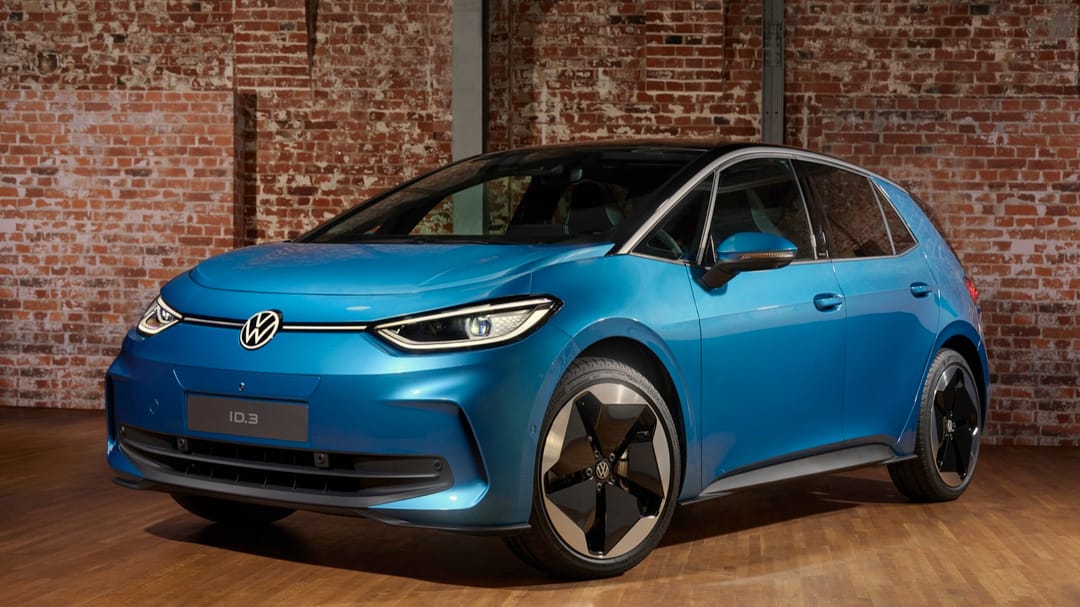Volkswagen ID.3 horsepower locked behind a subscription
Pricing and power figures
Volkswagen’s ID.3 Pro and Pro S are listed at 201 bhp in the UK, but owners can unlock the car’s full 228 bhp potential for an extra fee. The upgrade costs £16.50 per month, £165 annually, or £649 as a lifetime purchase that stays with the vehicle if it’s resold. The add-on delivers a 27 bhp increase, marketed as an “optional power upgrade.”
Volkswagen’s rationale for the “optional power upgrade”
Volkswagen frames the plan as flexibility: drivers can choose a sportier experience during the vehicle’s life without committing to a higher upfront price. It mirrors how trims historically offered the same engine with different potency at higher list prices—only now it’s toggled via software rather than hardware.
How EV performance subscriptions work for drivers
What changes (and what doesn’t) when you pay
With the performance package enabled, peak output rises to 228 bhp and torque increases accordingly, delivering stronger acceleration. Notably, range is unaffected by the upgrade, keeping day-to-day efficiency intact.
Insurance and resale implications
Because the car is registered at 228 bhp from the factory, owners don’t need to notify their insurer when enabling or disabling the power boost. Opting for the lifetime upgrade can enhance resale appeal, as the unlocked performance transfers to the next owner.
Automakers turning cars into software platforms
Why brands like BMW, Mercedes-Benz, and Polestar pursue subscriptions
European automakers have been rolling out tiered, subscription-style features—from comfort add-ons to performance boosts—bringing the software playbook into the cabin. This shift turns cars into configurable platforms where capabilities can be added over time.
Recurring revenue, upselling, and customer data
Subscriptions give carmakers ongoing cash flow, post-purchase upsell windows, and a steady stream of valuable usage data. The approach parallels the model popularized by Spotify, Netflix, and productivity apps—only now the stakes include acceleration, comfort features, and driving dynamics.
Subscription fatigue reaches the driver’s seat
The mounting cost of monthly plans
From entertainment to productivity, recurring fees already pile up—now mobility joins the stack. Add-on car features may deliver convenience and power on demand, but the collective monthly burden can be substantial, and pricing or features can change with little notice.
Consumer pushback and what’s changed since BMW’s heated seats
Public outcry has already reshaped the landscape. BMW dropped plans to charge monthly for activating heated seats already in cars after customers balked. Vocal feedback still matters, and organized responses can influence how—and whether—automakers gate hardware through software.
What this means for buyers considering an ID.3
When the upgrade makes financial sense
- Short-term thrill: Monthly access suits drivers who want occasional bursts of extra performance without a long commitment.
- Seasonal flexibility: Annual pricing can work if you expect regular use but still want off-ramps.
- Best long-term value: If you plan to keep the car (or maximize resale), the lifetime option secures the performance permanently and can be more cost‑effective over time.
Voting with your wallet: alternatives and advocacy
If paying to unlock built-in capability doesn’t sit right, stick with the base output and decline the upgrade. Consumers can also voice concerns directly to brands and dealers—previous backlash has already reversed unpopular subscription experiments. Your usage and feedback help set the boundaries of the subscription economy in mobility.
Related developments across the industry
From one-off purchases to ongoing plans
The era of one-time app buys is largely over. Now, car features are joining the broader subscription tide, complete with free trials, periodic pricing, and add-on catalogs. There’s even a cottage industry of tools to monitor and cancel unwanted subscriptions—often sold as subscriptions themselves.
The platform future of driving
As over-the-air updates become ubiquitous, vehicles will increasingly resemble living products that evolve post-sale. The promise: tailored features and continuous improvement. The risk: essential functions drifting behind paywalls, leaving drivers perpetually renting capability they can’t fully own.
Have your say
Your choices influence the road ahead. Explore the options, tally the cost over time, and share your experience with other drivers. Brands are listening—especially when customers speak in unison.
Q&A
Q1: Does the Volkswagen ID.3 power upgrade change the car’s range?
No. The performance increase to 228 bhp does not affect range, so efficiency remains the same during everyday driving.
Q2: If I buy the lifetime upgrade, does it carry over when I sell the car?
Yes. The lifetime subscription is tied to the vehicle, so the unlocked performance transfers to the next owner.
Q3: Why are automakers pushing subscriptions for in-car features?
Subscriptions provide flexibility for drivers while giving automakers recurring revenue, post-purchase upselling opportunities, and valuable customer data—extending the software platform model to vehicles.

